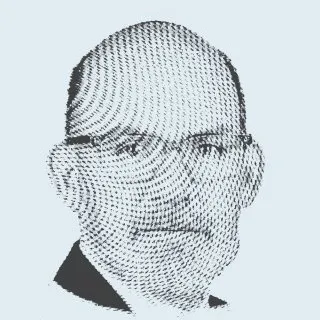President Ahmad Al-Sharaa prudently defused a dangerous crisis in a matter of days- a crisis that posed a dramatic threat to the country. Indeed, the powerful winds of incitement and misinformation could have turned the sparks of what happened in the coastal regions into a massive fire.
Bloodshed, killing, and acts of vengeance cannot be taken lightly, even when there is only a single victim, let alone dozens or hundreds. Preventing bloodshed must take precedence over all else, be the victims civilians, or security forces, every state has an obligation to reject sectarianism.
President Sharaa defused the crisis and took significant steps that exceeded the expectations of even his Syrian supporters. His sensible decisions can be summed up in his statement that everyone responsible would be held accountable, even those close to him. He crowned his efforts with the wise agreement we reached with the Syrian Democratic Forces (SDF).
Sharaa, with this last step, managed to reclaim a third of the country’s territory at a crucial time. Despite widespread calls for confrontation with the Kurds, he chose prudence and negotiation. However, that does not mean Syria will inevitably avoid new crises.
The fact is that there are two in Syria: the tangible reality of the events unfolding on the ground, and the virtual reality that frames these events. This reality is not confined to social media or media as a whole; it is far bigger. Since the development in the coastal region began, I have been asked the same question by everyone I meet or speak to:
"What is really happening in Syria?"
And when I explain, they all give the same answer:
"Now I understand."
Saudis, Syrians, Lebanese, Egyptians, and Westerners alike all ask this same question. Our reader may ask: "And who says you have the right answer?"
This is an important question, given the scale of misinformation about Syria, which is an extension of the lies around what has falsely been dubbed the "Arab Spring." In fact, the misinformation has only evolved since the time of the so-called Arab Spring, when, led by the efforts of former US President Obama, the events in Syria were framed as a "civil war."
The fact is that Syrians did not initially take up arms; they made legitimate demands. Then the "Assadist clamp down" began, followed by Iranian and Hezbollah intervention, then Russia’s involvement and we all know the rest of the story. Misinformation about Syria has persisted since then.
Things became more confused when some believed there was a single "catalog" for the region, particularly for everything tied to political Islam. No one seemed to notice how Islamists remained silent about Israel’s intervention in Syria, while they swiftly rose up against displacement in Gaza!
Accordingly, there is tangible reality in Syria, but it is being ignored in favor of virtual reality that many believe in. There are many examples: despite the number of positive steps taken by the new regime in Syria in three months, a systematic campaign to raise skepticism about it persists.
Assad remnants, aided in various ways by Hezbollah and Iran (including through the media influence) come out with weapons. Meanwhile, we hear loud cries of a "massacre" and "sectarianism." Misleading images spread on social media, and then we see calls for foreign intervention.
Demands for extending and ramping up sanctions persist as well. Ironically, they are coming from those who once championed citizenship, rebuilding the state, and whom we had previously supported, particularly in Iraq and Lebanon. Yet it has become clear that their motives had been sectarian and that "protecting minorities" had been a pretext.
Thus, what we can do for Syria today is support it by protecting it from the interference of certain neighboring countries. This demands that the friends of the new Syria take a real stand.










